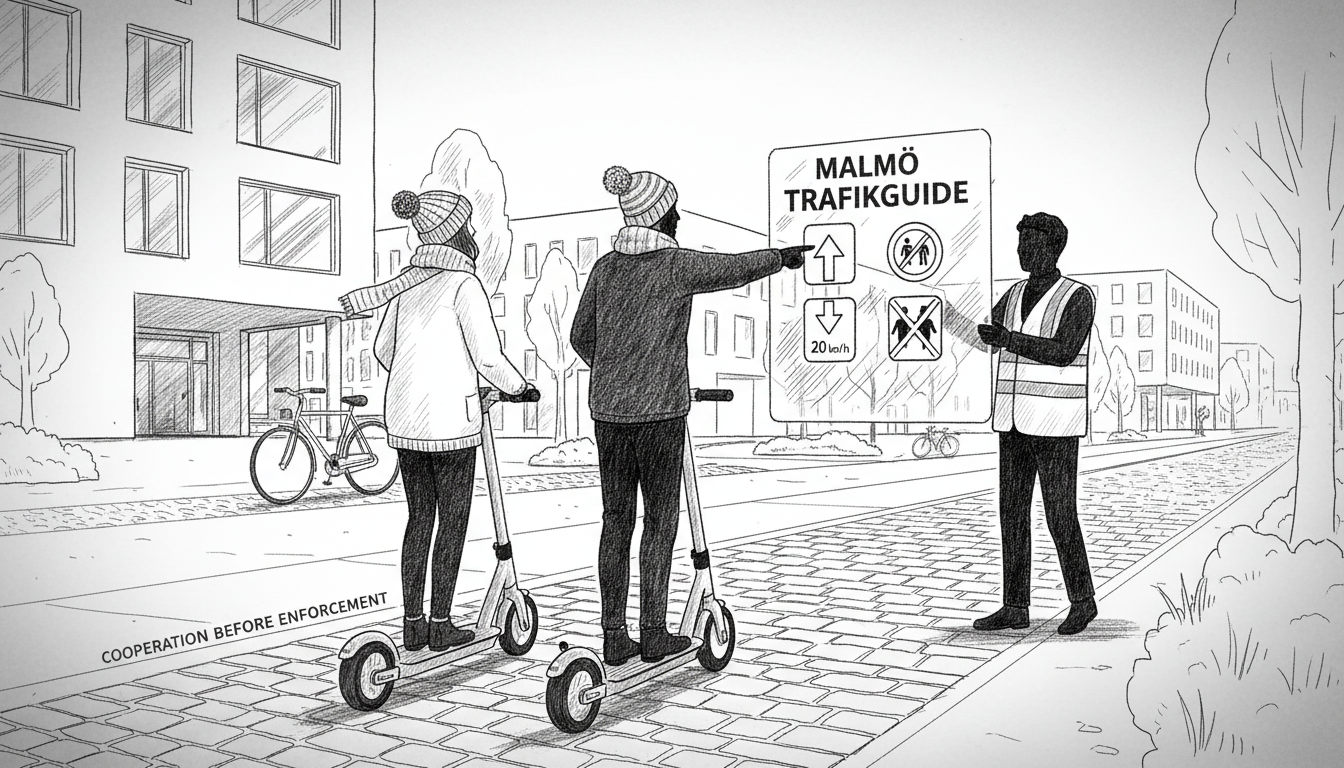Malmö officials have proposed a novel approach to managing e-scooter traffic. The city plans to deploy traffic guides who will educate riders about proper scooter usage. These guides will not have authority to issue fines but can stop people riding on sidewalks.
Andreas Schönström, the city's traffic commissioner, explained the thinking behind the initiative. He said the guides would politely direct riders to bicycle lanes or streets. The commissioner believes this approach can demonstrate proper traffic behavior to the community.
The city also wants to test special speed reduction measures for e-scooters. Traditional speed bumps present challenges on bicycle paths because they create tripping hazards for pedestrians. Officials have observed alternative solutions in other locations. Some cities paint thick stripes on paths that create bumpy rides for e-scooter users, naturally slowing their speed.
Malmö faces growing challenges with e-scooter usage as rental services expand throughout Swedish cities. The lightweight electric vehicles have become popular for short urban trips but create conflicts with pedestrians and cyclists. Many European cities struggle to balance micromobility benefits with public safety concerns.
Sweden's approach to transportation planning typically emphasizes education before enforcement. The traffic guide initiative reflects this philosophy. Other Nordic cities have experimented with different solutions. Copenhagen uses designated parking zones while Oslo has implemented geofencing technology to control speeds in crowded areas.
The success of Malmö's program could influence similar efforts across Scandinavia. Many urban centers seek cost-effective ways to manage new transportation technologies. Simple educational approaches might prove more sustainable than complex technological solutions.
International observers will watch how this voluntary compliance system works. Cities worldwide face similar challenges with dockless electric scooters. The Malmö experiment could provide valuable insights about human behavior and urban mobility.
What happens if riders ignore the traffic guides? The city may need to consider stronger measures if educational efforts fail. Most Swedish cities prefer cooperative solutions but have enforcement options available when necessary. The coming months will reveal whether friendly guidance can change riding habits.

